Review: 62 Years After Debuting On Broadway, WEST SIDE STORY Holds A Relevance For A Modern Age
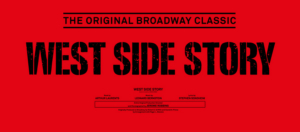
Tuesday 20th August 2019, 7:30pm, Joan Sutherland Theatre Sydney Opera House
Leonard Bernstein (Music), Stephen Sondheim (Lyrics) and Arthur Laurents' (Book) WEST SIDE STORY signalled a dawn of a new style of musical theatre when Jerome Robbins' production premiered in 1957. Director Joey McKneely pairs Robbins' original choreography with a new vision to present the ground-breaking musical for a new generation and following an international tour, WEST SIDE STORY arrives in Sydney with an all Australian cast of fresh young faces.
 Nominated for six Tony Awards, winning two in its premiere year, most people will be familiar with WEST SIDE STORY, either from the numerous productions over the years or the 1961 film adaptation. Its darker grittier tone deviated from the saccharine stories that dominated the genre and the blending of sophisticated music which draws on Latin American tones and incorporated operatic stylings led to well known 'standards'. Whilst much of the work remains anchored to its setting of the mid 1950's New York, one of McKneely's most striking directorial choices is to return the story to that of older teens and young adults struggling to assert their identity as they seek to secure their space in the world, or at least, the tenements of the Upper West Side of New York City, before it was overtaken by development. There is a diversity in the members of the warring factions which is more representative of what a group of youth would really look like, from smaller boys still waiting for a growth spurt to those that hit puberty early. This choice adds to the tragedy of the Romeo and Juliet inspired work as it is not just gangland thugs but boys, barely even men, that have been robbed of a future, all in the name of prejudice and fear as the children of earlier white European migrants band together as the "Jets" and turn on the new Puerto Rican migrant group, the "Sharks".
Nominated for six Tony Awards, winning two in its premiere year, most people will be familiar with WEST SIDE STORY, either from the numerous productions over the years or the 1961 film adaptation. Its darker grittier tone deviated from the saccharine stories that dominated the genre and the blending of sophisticated music which draws on Latin American tones and incorporated operatic stylings led to well known 'standards'. Whilst much of the work remains anchored to its setting of the mid 1950's New York, one of McKneely's most striking directorial choices is to return the story to that of older teens and young adults struggling to assert their identity as they seek to secure their space in the world, or at least, the tenements of the Upper West Side of New York City, before it was overtaken by development. There is a diversity in the members of the warring factions which is more representative of what a group of youth would really look like, from smaller boys still waiting for a growth spurt to those that hit puberty early. This choice adds to the tragedy of the Romeo and Juliet inspired work as it is not just gangland thugs but boys, barely even men, that have been robbed of a future, all in the name of prejudice and fear as the children of earlier white European migrants band together as the "Jets" and turn on the new Puerto Rican migrant group, the "Sharks".
 Set designer Paul Gallis draws on the image of the metal frame fire escapes that line the walls of the walk-up slum tenements of New York city with three story frameworks that boarder the stage and can be drawn together to close the space. They evoke the feeling of being closed in and constrained, as the youth in the story would have felt in the narrow New York streets that they were so desperate to protect as their own 'turf'. The dark metalwork allows light through, casting shadows beneath whilst also matching in with the black and white archive images cast onto a rear LED screen that help set the locations, from residential blocks with washing hung from windows to commercial areas with shop banners and the dress shop's distant view of the Empire State Building. Internal spaces are implied with simple additions of a milk bar counter, iron bed and dress shop mannequins, ensuring as much space as possible remains for Robbins' choreography.
Set designer Paul Gallis draws on the image of the metal frame fire escapes that line the walls of the walk-up slum tenements of New York city with three story frameworks that boarder the stage and can be drawn together to close the space. They evoke the feeling of being closed in and constrained, as the youth in the story would have felt in the narrow New York streets that they were so desperate to protect as their own 'turf'. The dark metalwork allows light through, casting shadows beneath whilst also matching in with the black and white archive images cast onto a rear LED screen that help set the locations, from residential blocks with washing hung from windows to commercial areas with shop banners and the dress shop's distant view of the Empire State Building. Internal spaces are implied with simple additions of a milk bar counter, iron bed and dress shop mannequins, ensuring as much space as possible remains for Robbins' choreography.
 The colour of the work comes from Renate Schmitzer costume design and Peter Halbsgut's lighting design. Schmitzer easily delineates the gangs with her choice of muted tones, denim and uniform satin bomber jackets for the Jets and bright chinos and sharp bold suits for the Sharks. Similarly, the girls that hang out with the gangs are similarly separated with the white girls in somewhat plain dresses in comparison to the Puerto Rican ladies fabulous tiered skirts. Schmitzer ensures that Maria (Sophie Salvesani) and Tony (Daniel Assetta) stand out from both groups with innocent white and blue for the young Puerto Rican and preppy white shirt and beige pants for the white boy who wants a better future than his disengaged friends. Halbsgut's lighting helps shift the story from moments of expression of inner thoughts and desires to the real world with the aid of washes of colour and the use of the rear wall of graduated sunsets and ominous red as the war is waged. Beams of blue night light shine through the ironwork and eerie green presents a sense of foreboding whilst a tender moment between Maria and Tony is held in the faintest of shadows.
The colour of the work comes from Renate Schmitzer costume design and Peter Halbsgut's lighting design. Schmitzer easily delineates the gangs with her choice of muted tones, denim and uniform satin bomber jackets for the Jets and bright chinos and sharp bold suits for the Sharks. Similarly, the girls that hang out with the gangs are similarly separated with the white girls in somewhat plain dresses in comparison to the Puerto Rican ladies fabulous tiered skirts. Schmitzer ensures that Maria (Sophie Salvesani) and Tony (Daniel Assetta) stand out from both groups with innocent white and blue for the young Puerto Rican and preppy white shirt and beige pants for the white boy who wants a better future than his disengaged friends. Halbsgut's lighting helps shift the story from moments of expression of inner thoughts and desires to the real world with the aid of washes of colour and the use of the rear wall of graduated sunsets and ominous red as the war is waged. Beams of blue night light shine through the ironwork and eerie green presents a sense of foreboding whilst a tender moment between Maria and Tony is held in the faintest of shadows.
 The young ensemble, many of which are making their professional debut in this production, appear to come from a predominantly dance focused background which works well for McKneely's recreation of Robbins spectacular choreography. Latin American styles of Mambo and Chacha are presented with vibrant passion while the Ballet sequence has a romantic grace. The faces offs between the rivals has a delicious aggression and power as they try to intimidate each other. The different cultures view of a women's role in the fight is reinforced by the white girls echoing the Jets moves while the Puerto Rican girls opt to wait for their men to return home after the fight. In addition to the more traditional dance pieces there is a wonderful physicality that draws on slapstick vaudeville stylings and teasing comedy that adds a lightness to the intense story.
The young ensemble, many of which are making their professional debut in this production, appear to come from a predominantly dance focused background which works well for McKneely's recreation of Robbins spectacular choreography. Latin American styles of Mambo and Chacha are presented with vibrant passion while the Ballet sequence has a romantic grace. The faces offs between the rivals has a delicious aggression and power as they try to intimidate each other. The different cultures view of a women's role in the fight is reinforced by the white girls echoing the Jets moves while the Puerto Rican girls opt to wait for their men to return home after the fight. In addition to the more traditional dance pieces there is a wonderful physicality that draws on slapstick vaudeville stylings and teasing comedy that adds a lightness to the intense story.
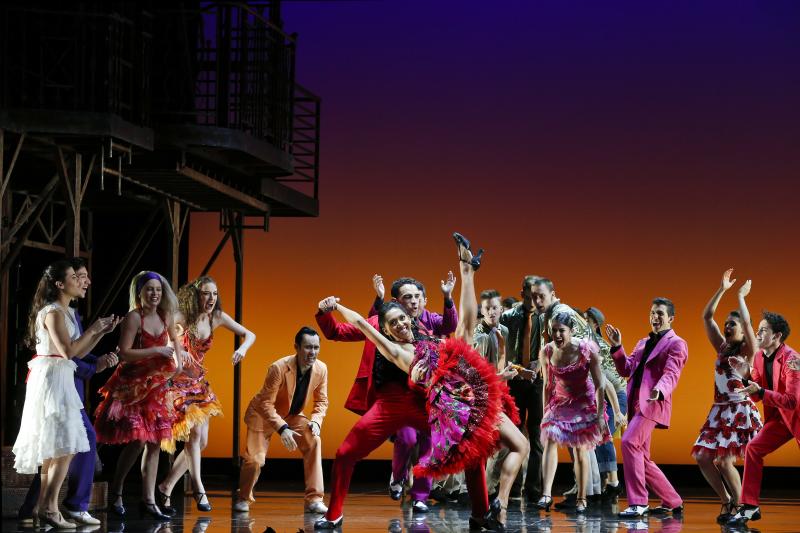 For opening night, Daniel Assetta performed the role of Tony, replacing the billed Todd Jacobsson who was off ill. The former Rob Guest Endowment Award winner Assetta presented a delightful Tony with strong rich vocals that had a purity whilst expressing the passion of the young man who has fallen head over heals with Maria. He ensures that Tony is seen as different and evolved from the group that he founded as the young man seeking a more responsible life but still exhibits a loyalty to his friends. Newcomer Sophie Salvesani brings her opera background to the role of Maria, delivering a wonderful ringing soprano sound to go with a delightful expression of innocence. At times Salvesani appears a little uneasy but hopefully it was just opening night nerves and that with time she will settle into a more intuitive expression of the wide-eyed young woman.
For opening night, Daniel Assetta performed the role of Tony, replacing the billed Todd Jacobsson who was off ill. The former Rob Guest Endowment Award winner Assetta presented a delightful Tony with strong rich vocals that had a purity whilst expressing the passion of the young man who has fallen head over heals with Maria. He ensures that Tony is seen as different and evolved from the group that he founded as the young man seeking a more responsible life but still exhibits a loyalty to his friends. Newcomer Sophie Salvesani brings her opera background to the role of Maria, delivering a wonderful ringing soprano sound to go with a delightful expression of innocence. At times Salvesani appears a little uneasy but hopefully it was just opening night nerves and that with time she will settle into a more intuitive expression of the wide-eyed young woman.
 Noah Mullins presents a somewhat unconventional presentation of the leader of the Jets, Riff. He presents a quietly charismatic leader whilst not having the heft or gravitas one would traditionally expect from a gang leader. Riff's rival Bernardo, the leader of the Sharks is presented by Lyndon Watts who presents a more traditional expression of a gang leader as the more mature and slick leader has more imposing presence.
Noah Mullins presents a somewhat unconventional presentation of the leader of the Jets, Riff. He presents a quietly charismatic leader whilst not having the heft or gravitas one would traditionally expect from a gang leader. Riff's rival Bernardo, the leader of the Sharks is presented by Lyndon Watts who presents a more traditional expression of a gang leader as the more mature and slick leader has more imposing presence.
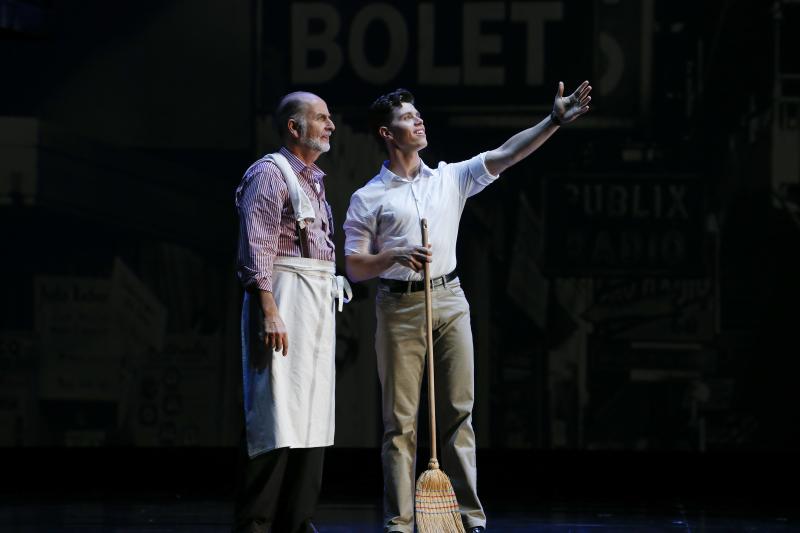 Stand out of the supporting cast is Chloe Zuel as Anita. A fabulous dancer, strong singer with a commanding dramatic presence, Zuel gives the Bernardo's girlfriend and Maria's mentor of sorts a vibrant sassy power with an intuitive expression as the more confident woman. Her lead of America is hilarious whilst her A Boy Like That is infused with the pain and emotion of Bernardo's death and her fear that Maria is being led on.
Stand out of the supporting cast is Chloe Zuel as Anita. A fabulous dancer, strong singer with a commanding dramatic presence, Zuel gives the Bernardo's girlfriend and Maria's mentor of sorts a vibrant sassy power with an intuitive expression as the more confident woman. Her lead of America is hilarious whilst her A Boy Like That is infused with the pain and emotion of Bernardo's death and her fear that Maria is being led on.
 Whilst at times conductor and musical supervisor Donald Chan drives Bernstein's iconic music too fast, missing the emotional reaches, overall this is a well-presented production that recreates the fabulous choreography and reframes the work with a new understanding of the futility of the fight. In an age where world leaders keep promoting division and fear of migrants, WEST SIDE STORY unfortunately still holds a relevance and hopefully the medium of theatre may help remind people that fear and prejudice really doesn't do anything but cause pain.
Whilst at times conductor and musical supervisor Donald Chan drives Bernstein's iconic music too fast, missing the emotional reaches, overall this is a well-presented production that recreates the fabulous choreography and reframes the work with a new understanding of the futility of the fight. In an age where world leaders keep promoting division and fear of migrants, WEST SIDE STORY unfortunately still holds a relevance and hopefully the medium of theatre may help remind people that fear and prejudice really doesn't do anything but cause pain.
Photos: Jeff Busby

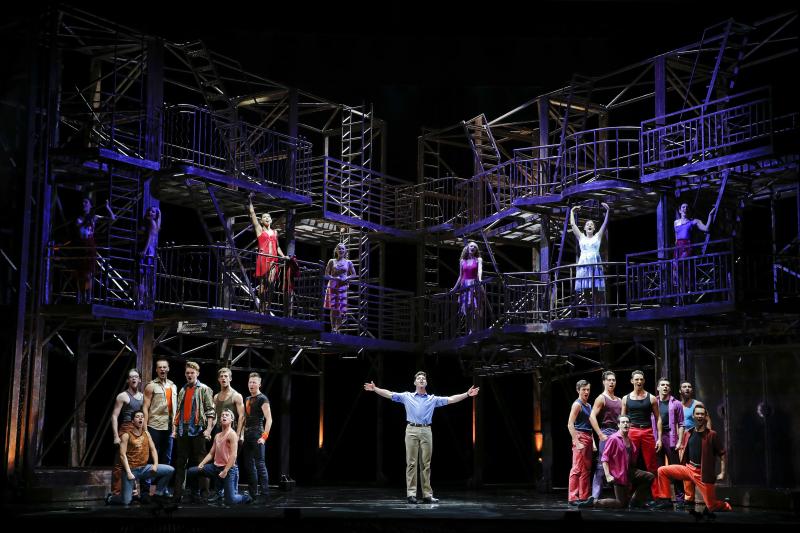
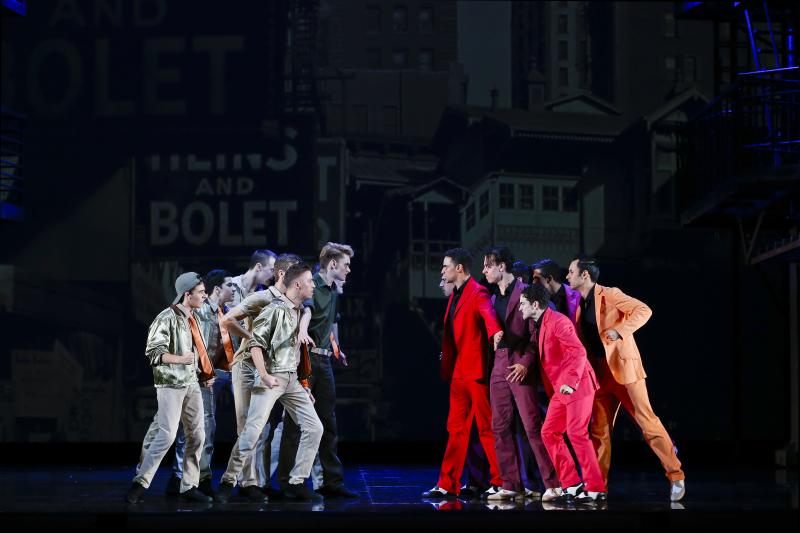
Comments

Videos
